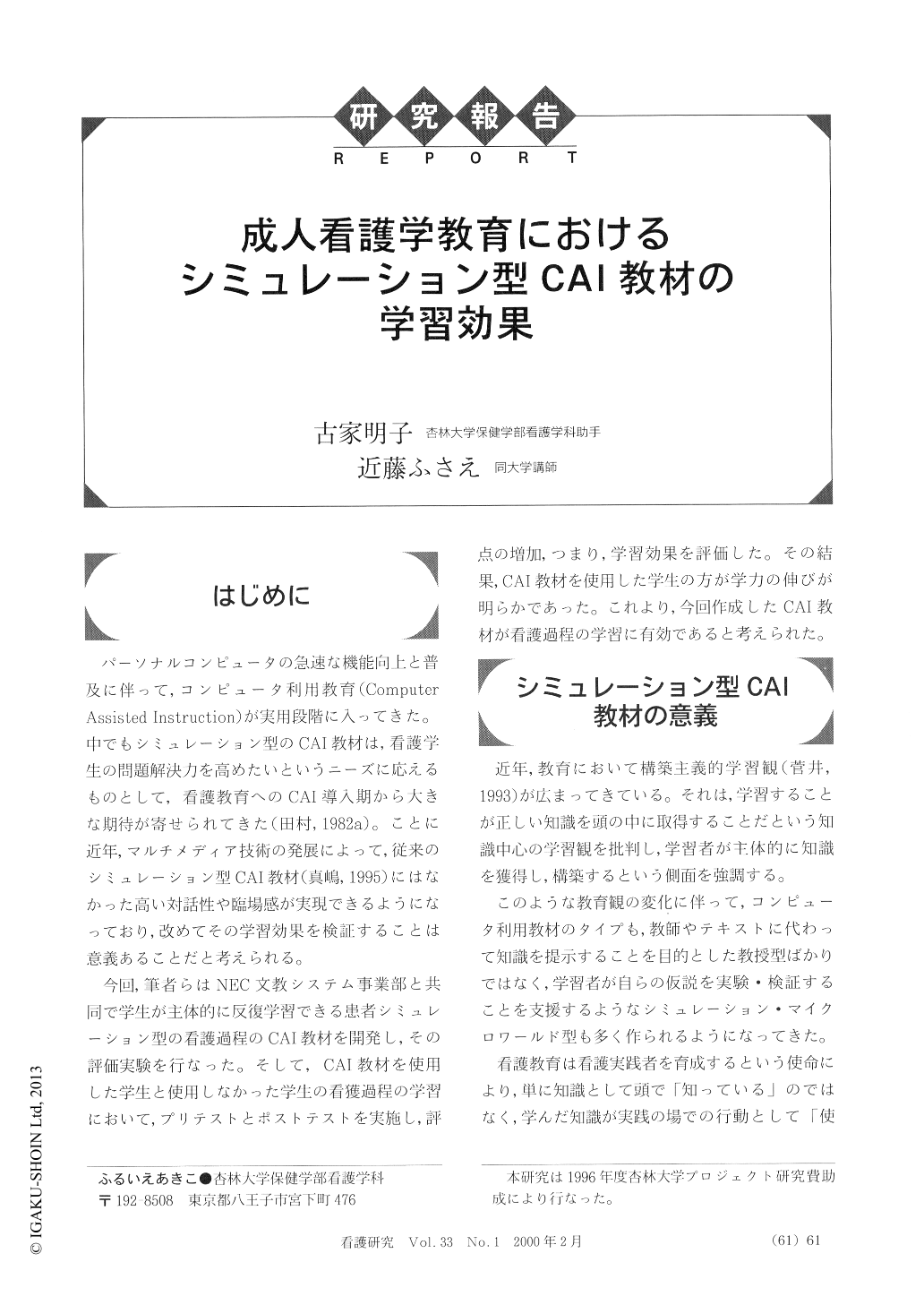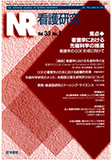Japanese
English
- 有料閲覧
- Abstract 文献概要
- 1ページ目 Look Inside
- サイト内被引用 Cited by
はじめに
パーソナルコンピュータの急速な機能向上と普及に伴って,コンピュータ利用教育(Computer Assisted Instruction)が実用段階に入ってきた。中でもシミュレーション型のCAI教材は,看護学生の問題解決力を高めたいというニーズに応えるものとして,看護教育へのCAI導入期から大きな期待が寄せられてきた(田村,1982a)。ことに近年,マルチメディア技術の発展によって,従来のシミュレーション型CAI教材(真嶋,1995)にはなかった高い対話性や臨場感が実現できるようになっており,改めてその学習効果を検証することは意義あることだと考えられる。
今回,筆者らはNEC文教システム事業部と共同で学生が主体的に反復学習できる患者シミュレーション型の看護過程のCAI教材を開発し,その評価実験を行なった。そして,CAI教材を使用した学生と使用しなかった学生の看獲過程の学習において,プリテストとポストテストを実施し,評点の増加,つまり,学習効果を評価した。その結果,CAI教材を使用した学生の方が学力の伸びが明らかであった。これより,今回作成したCAI教材が看護過程の学習に有効であると考えられた。
A simulation-type CAI (computer-assisted instruction) learning program was developed with the goal of fostering a sense of continuity and connectivity between systematized academic knowledge of the nursing process and knowledge gained through practical clinical experience, and was subsequently evaluated for effectiveness. The CAI system uses a variety of media, such as video, to present students with a series of 'nursing situations' involving a simulated case. The student then uses the information presented to formulate nursing diagnoses and create a care plan for the case. The virtual patient's condition changes in response to the care plan, making it possible for students to assess a plan's effectiveness through observation of its results. This allows students to participate in self-directed, iterative learning.
Nursing students using the program reported increased desire to study, confirming the role of CAI course materials as effective motivators in the study of the nursing process. It was also found that students who had used the CAI program performed data analysis and data structuring better than the control group.

Copyright © 2000, Igaku-Shoin Ltd. All rights reserved.


